Autonomous SmartDesk Core Standing Desk Review
- Lab tested
Like most reviews sites, our editorial staff and laboratory testing expenses are partially offset by earning small commissions (at no cost to you) when you purchase something through those links. Learn More

Overview
| Review Summary |
Autonomous has revamped their website, changed the names of many of their desks and increased prices in an effort to change their reputation. The SmartDesk Core helps in that effort with an improved warranty and more desktop options, though there’s still plenty of work to do to bring this desk up to the next tier of more durable, reliable, and higher value standing desks. Despite its new website’s impressive marketing polish, Autonomous still has both feet firmly planted in the “race to the bottom,” commodity-grade category of Chinese-built standing desks. |
|---|---|
| MSRP / List Price | $439 |
| Street Price |
By Autonomous x Timotion 55″ x 28″: $439 |
| Shipping |
Free |
| Warranty |
5 years on base, 1 year on top |
| Lift Type |
Single-stage, dual-motor electric |
| Transit Speed |
1.2 inches per second |
| Controller |
Digital readout with four memory presets |
| Sizes Available |
53″ × 30″ or 70.5″ x 30″ |
| Colors Available |
53″ x 30″: White, Black, Walnut, White Oak, Bamboo or Dark Bamboo. Artists x Autonomous collection: A New Journey, My Mind Garden, Tree On Sunset Clouds, Cheery Moonlight or Stree Me Not. 70.5″ x 30″: White, Black or Walnut Frame: White, Black or Grey |
| Adjustment Range |
Height range: 29.4″-48″ |
| Weight Capacity |
265 lbs |
| Typical Assembly Time |
60-75 minutes |
| ANSI/BIFMA Certified |
Yes |
| NEAT™ Certified by Mayo Clinic |
No |
| Competition |
Compare to All Electric Standing Desks
|
| Where to buy |
Buy on Autonomous |
Rating
| Ease of Assembly | |
|---|---|
| Stability | |
| Reliability | |
| Customer Experience | |
| Innovation | |
| Value | |
| Positives | The SmartDesk Core desks are aesthetically pleasing with a variety of size and color options. Even with a price increase from their previous models, this is still a cheap standing desk. |
| Negatives | It’s unstable, especially near the top of the height range. Overall quality, from the powder coat top to the thin gauge of steel, feels like the cheap desk it is. Assembly can be confusing and difficult. Even if it all goes well, there are 44 bolts and screws to work with. Desktop options are limited. The warranty is short. This is basically the SmartDesk 2, which has a very poor reputation. |
Bottom Line

Despite being very popular primarily among Gen Z and Gen Y consumers, Autonomous products have consistently ranked low in our reviews because of their low quality and poor customer reviews, so we were excited to see what looked like a possible pivot in direction with an updated website, seemingly updated product line and a corresponding increase in price.
However, once we got our hands on the “new” SmartDesk Core, it was instantly clear that this is basically a re-branded SmartDesk 2. This initially seemed problematic because the SmartDesk 2 has a very poor reputation among customers and reviewers alike, but after a deeper look, this is a great example of addition by subtraction.
Gone is the weak, single-stage “Home Edition” with its fragile, under-powered single-motor design. As we stated in our original SmartDesk 2 review, the configuration was bad and the reason for much of the SmartDesk 2’s bad press. What’s left in the SmartDesk Core is essentially just the single-stage version of the SmartDesk 2 Business Edition. This should result in a more reliable desk.
Is The Autonomous SmartDesk Core Base Actually Better Than The Original SmartDesk 2?
The SmartDesk Core comes in just one configuration, a dual-motor, single-stage frame (i.e. two-segment lifting columns) that has a weight capacity of 265 pounds and listed transit speed of a blazing 2.3 inches per second.
In our lab testing, the actual measured transit speed came in at about 1.2 inches per second, almost half of the claim Autonomous makes in their published specs.
In the past, the original SmartDesk 2 consistently got dished with user complaints of a slower transit speed and high motor noise as it approached its maximum weight capacity. We did not see that with the SmartDesk Core sample desk that Autonomous sent us for testing, so that’s good news. The transit speed at least did not slow when we added test payloads all the way up to its rated maximum weight capacity (see video below). There was a slight increase in motor noise at maximum capacity, but nothing extraordinary.

The single-stage legs have a height range of 29.4”-48” (with the top). This stroke of 18.6” is naturally shorter than you’d find on a dual-stage base, which will typically be 25”-26”, but the real issue with it is that the minimum height of 29.4” is too tall for many shorter people to be seated at ergonomically.
The gold standard for height adjustment range is the ANSI/BIFMA G1-2013 Ergonomic Guidelines, which set the bottom-end height adjustment range recommendation at 22”. As we’ve written about many times, that’s absurdly low, and 25” is more than sufficient for the entire population considering that a height-adjustable, under-desk keyboard tray can always be added to accommodate the extremely small number of office workers who are really that short. But 29.4” is going to be too high for many, for sure, particularly many female office workers.
According to the height calculator on Autonomous’ website, this desk’s minimally-adjustable sitting height is appropriate only for those “6-foot-5 and taller.” We’re not sure where they got this information, but it’s incorrect, and it shows just how much vetting goes into their marketing claims. If one were to believe their marketing content no one shorter than 6-foot-5 should buy this desk, at least if they ever planned to sit at it.
But, wait… again, referencing the ANSI/BIFMA G1 guidelines… 48” is considered to be the minimum top-end height adjustment range for users up to 6-foot-2. So in essence, no user exists who might be the right height to use the SmartDesk Core both as a sitting desk and as a standing desk? Their marketing team really needs to overhaul this “calculator.”
Let’s cut to the chase on this because we’ve been lab testing standing desks for more than a decade and this stuff isn’t really that complicated. The calculator on Autonomous’ website is misleading. A single-stage base is going to have a shorter stroke, so it’s not suitable for a mixed-use situation, like a “hot desk” being used by multiple office workers or family members. For those situations, a dual-stage base with a 25” or 26” stroke is going to meet everyone’s needs, sitting or standing. Of at least “the 95th percentile of seated females and standing males,” which is the ANSI/BIFMA goal based on the last US Census.
To keep prices down, Autonomous went with a single-stage base, so they had three choices to make:
- Pick a middling height adjustment range. This is what most manufacturers do and it means their single-stage desks will work best for average-height people, and won’t work well for the shortest or tallest people.
- Bias the adjustability to a low-end range by using a shorter bottom tube. This would bias the target market to seated females. No manufacturer has ever done this to our knowledge, as there wouldn’t be much business sense to doing so.
- Bias the adjustability to a high-end range by using a longer bottom tube. This is what Autonomous has chosen to do. By giving up on ergonomic suitability for shorter seated individuals they potentially gained more for taller (mostly male) customers, statistically speaking, up to 6-foot-2.
As for the SmartDesk Core, they designed the desk base with a very long bottom tube, biasing the height adjustment range for standing male users, and leaving shorter seated female users in the cold. While this may seem like a sexist move it’s probably a smart one for Autonomous based on where their traditional target market has been, i.e. young dudes who don’t mind a big DIY project if it’ll save them a few bucks.
Interestingly, the product page says this desk does not have an anti-collision feature. But when we tested the desk, it clearly does have anti-collision. It’s implemented inconsistently and not quite sensitive enough, but it’s definitely nice to have it included. There does not appear to be any anti-tilt feature, however, which is something that’s more and more expected to be included in new standing desk designs these days—particularly those, like this one, that is being marketed as Work-From-Home products.
The controller on the SmartDesk Core has four height memory presets and no Bluetooth connectivity. Bluetooth-sync’d smartphone apps for standing desk users are all the rage now, and indeed even Autonomous has one for their higher-end desk that we’re reviewing as part of a new roundup we’re working on, but the Core desk will never be able to work with that app.
As for stability, the Autonomous SmartDesk Core isn’t as bad as its predecessor but is far from great, even in this price range. The desk goes fairly high for a single-stage base, but to get to 48” there’s very little overlap left at the ends of the two tubes of the lifting columns, so stability naturally suffers at that max height. The legs are made from a very thin gauge of steel, which doesn’t help. At the end of the day, the amount of “deflection” in the legs is what we’d expect from a Chinese-made standing desk in this price range (learn more in our primers on Why Some Standing Desks Shake More Than Others and The Differences Between American-Made and Asian-Made Standing Desks).
Stability moves into the average range as you move away from the maximum height, so this is mainly a problem for tall users and treadmill-desk users. We would not recommend this desk for either of those two groups.
Considering the instability when raised and the tall minimum height, the SmartDesk Core is best only for those of medium stature. Autonomous does not offer leg extenders or even caster wheels to gain a little extra height out of their bases and thus gain some extra stability. The overall lightness of the base certainly saves in steel and shipping costs, but it raises the center of gravity of the desk and results in a shakier experience than competing desks that put more heft into the frame components, and especially the feet.
More Desktop Options, But Not A Lot More

The desktop is not the standard high-pressure laminated (HPL) desktop that most cheap standing desks come with. Instead, it’s just a plain MDF board that has been slightly ergo-contoured around the rim with a ¼” radius, and then powder-coated (spray painted). This is actually even cheaper to make than HPL, but gets rid of the hard edges when you lean your arms against the desk or bump your hip into a corner. (Learn more about the different materials and technologies used in making desktops for standing desks.)
Powder-coated MDF is one of the cheapest types of desktops to manufacture, if not the very cheapest, but is highly susceptible to damage because it adds little or no protection from scratches, dents, or cleaning chemicals. Spill your Coke on it and the paint might just come off if you don’t wipe it up quickly enough. We tested a few different kinds of spills and cleaning chemicals on the desktop to see how porous and impervious the powder coat is compared to other desktops on the market.
The standard cleaner we use around the office these days is Clorox Clean-Up Cleaner with Bleach Spray that’s supposed to kill 99.9% of bacteria and viruses. No, it won’t kill COVID-19, much less Norovirus, but it does a pretty good job of removing typical home and office stains without destroying more delicate powder-coated or HPL tops (learn about the best ways to clean, disinfect, sanitize and sterilize office desks).
When we used it on the white Autonomous powder-coated desktop to see if we could get the paint to come off, no amount of rubbing would reveal the MDF underneath. Phew. We then tried it on a blotch of yellow highlighter marker and a coffee spill that were left to dry on the desk for 15 minutes. The Clorox spray cleaned it right up. Excellent! We’ve seen powder-coated desks from China destroyed by weaker chemicals.
We then amped up the test to see if black dry erase marker would make a permanent stain. With a whole lot of elbow grease, we managed to get it completely removed with only barely a hint of black residue left on the desktop. Again, we’ve seen other cheap powder-coated tops “own” that stain forevermore.

Then we tried a black Sharpie. Unfortunately, this is where our successful tests came to an end. Big time. After letting the ink dry for only one minute we were only able to get about 10% of the Sharpie ink out of the white paint, no matter how long we rubbed or how much bleach we used. There is now a permanent black blotch on the desktop, which honestly we didn’t expect given how well the dry erase came off. When we’ve tested this same marker and same cleaner on a white iMovR 3D-laminated desktop, for example, it completely wiped off with just one swipe of a paper towel. So this was disappointing, but overall, compared to other powder-coated desktops from China, pretty darned good.
The powder-coated top comes with a one-year warranty. Frankly, most Chinese-made desktops don’t even have a warranty at all; but even those that do usually have so many exclusions that the only thing they’ll really replace is a board damaged in shipping. If you spill your coffee and it stains through the paint, that’s on you.
While there are some American powder-coated MDF desktops that are much more durable (and come with 10-year warranties, like on the ZipDesk), the performance of the Autonomous powder coat paint is very typical of, if not better than most Chinese-manufactured powder-coated tops.
On to the positives, the desk comes with quality grommet covers that have cable pass-throughs. We have seen previous reviewers say the grommet covers don’t hold in the grommets well and can pop out annoyingly when cables move through them, but we didn’t see that issue at all, so maybe they’ve updated the grommet hole diameter to hold the grommet caps in place a bit better.
The available desktop options are another upgrade from the SmartDesk 2, which only came in one desktop size (53” x 30”). The Autonomous SmartDesk Core comes in 43″ x 24″, 53” x 29”, and 70.5” x 30”. Having just three sizes is still disappointing when some competitors offer literally dozens of shapes, but it’s better than having just one, we suppose.
 My Mind Garden desktop, one of the Artists x Autonomous collection (No longer listed on their website).
My Mind Garden desktop, one of the Artists x Autonomous collection (No longer listed on their website).The SmartDesk 2 also had only five desktop colors. The SmartDesk Core has 9 to pick from in the medium size but is more limited on the small and large options. It appears that their Artists x Autonomous Collection that featured designs on a printed desktop are no longer available on their website.
All of these options are great, but they also change the cost profile of the desk. You can get the 53” x 29” size in white or black for $549. Walnut and White Oak cost $599. Bamboo cost $699. Mind you, the Walnut and White Oak are not made of real wood, they’re just faux laminates. The other colors come in at $579.
The 70.5” x 30” comes in more limited colors with just white, black and Walnut, all for $849.
The smaller 43″ x 24″ only comes in a white top with a $499 price.
The frame is available in white, black and gray for both sizes.
Assembly Still a Chore
Assembly for the Autonomous SmartDesk Core can be a bit of a maze and that’s reflected in the very first step of the installation (see the video of our assembly experience). In that first step, you’re instructed to loosen the support beam and “adjust Beam to proper position to fit the Desk Top” but there’s no indication of what that proper position is because the instructions were written for all desktop sizes. Going from comments on the Autonomous assembly video, many users were tripped up by this step.
The workaround is to not adjust the beam until you reach step six and place the assembled desk frame onto the desktop. You’ll then have to slide it and line it up with the pre-drilled holes in the desktop. This isn’t difficult, but it does show a lack of attention to detail that has always been problematic with Autonomous’ assembly guides.
Another issue is in step two, where you attach the legs to the support beam. The instructions show the support beam on the ground and the leg being dropped into place from above. This method doesn’t actually work because of how the cutouts for the cables line up. The leg must be placed on the ground and the support beam placed over it. Just like the above example, this workaround isn’t overly difficult, but it’s mildly annoying that you have to figure it out.
There are also problems with the pre-drilled holes where the support beam attaches to the desktop because two of the pre-drilled holes do not line up with the rubber stoppers. This is another known issue, again because of comments on the Autonomous assembly video. Autonomous responded to many of the comments saying not to worry about it and use the holes that line up. This worked for us and provided a stable connection, but you should be wary that this is technically improper assembly and may give Autonomous an out if you ever need to exercise your warranty.
Finally, the instructions do not contain information about setting the height memory presets. To do this, you put the desk at the height you’d like, hold down the “M” button until the height flashes and then push the preset number you’d like to set.
If the above issues are all addressed, this assembly would rate as medium/hard among standing desks. There are 44 bolts and screws to install, but at least there were no issues with bolts turning into painted threads as we’ve seen with some desks, like UpLift’s V2. The screws were difficult to get in by hand, so we definitely recommend using a cordless screwdriver. Expect to take more than an hour without an electric drill and just under an hour with one.
Warranty
Warranty is another area of improvement. From a one-year warranty on the SmartDesk 2 Home Edition to five years for the frame and one year for the desktop on the Autonomous SmartDesk Core. To be clear, this is still well behind other big players like UpLift, Fully and iMovR who have up to 15-year warranties. For more information on warranties, be sure to read our primer on How to Compare Warranties on Standing Desks, as some of them tend to be fraught with so many carve-outs as to be highly diminished when it comes time to actually get any service.
And as we noted above in the assembly section, this installation has parts that are difficult and may require a workaround, which could void your warranty.
Autonomous does offer free returns within 30 days. To avoid a potential 30-percent restocking fee, you should keep your original packaging for 30 days, or until you’re sure you won’t be returning the desk.
The Takeaway
Yes, the Autonomous SmartDesk Core is basically the same as the SmartDesk 2, but Autonomous improved the overall product by cutting out the weakest element. Namely, the problematic, single-motor Home Edition.
The remaining desk is essentially a single-stage SmartDesk 2 Business Edition, which was an arguably more reliable desk, but still a decidedly “low end” commodity-quality desk. Only now at a significantly higher price point. We are all aware that the pandemic economy has led to cost increases for all manufacturers, and two rounds of tariffs on Chinese-made goods have increased costs of products like these by 25 percent as well.
At a time when deep ocean freight costs have spiked 8x or more, it’s no surprise that Autonomous, like all their competitors, have had to raise their prices. Hiding that by launching an all-new desk line by merely renaming it and giving the website an update? That’s just very slick marketing.
The SmartDesk Core also has slightly increased desktop sizes and color options.
These are steps in the right direction but we’re still hesitant to recommend a desk that shares most of its DNA with a predecessor that’s widely been ripped to shreds by countless customers and reviewers on Reddit and elsewhere.
Autonomous has shipped a lot of problematic desks and deservedly built a reputation that reflects that fact. This desk is slightly better, but still has issues. Again, this is progress, but we’d like to see a lot more before we start recommending them.
If you do pick the Autonomous SmartDesk Core, be careful with the installation and keep your original packaging through the 30-day trial period in case things go south.
Many standing desks and converters come with grommets for some added convenience. Check out our article on grommet holes for everything you need to know about the different ways to use them to enhance your workstation, what to look for in your grommet holes, and where to find the desks with the best ones.

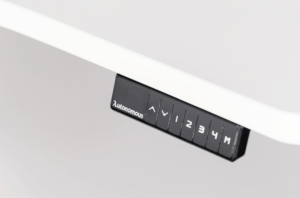
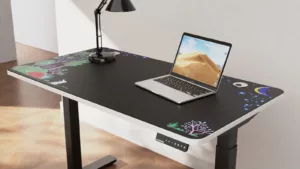
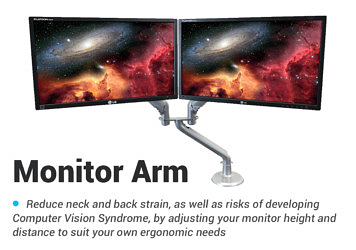
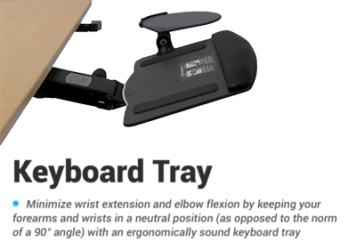
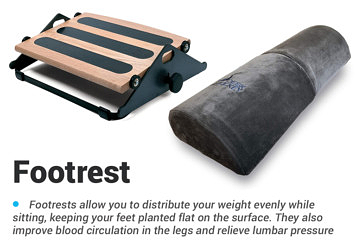
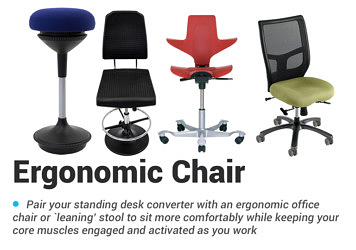
0 Comments
Leave a response >